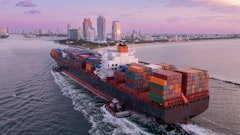
Whenever a presidential election ends, business leaders want to know how the results will affect their industries. After analyzing Donald Trump’s plans for the next four years—especially as it relates to his tariff proposals, supply chain organizations should be prepared for three potentially disruptive issues: inflation, pricing fluctuation and shortages.
Some industries, of course, are better prepared for disruptions than others. If there’s one thing that successful supply chain organizations know best, it’s how to deal with major global changes—tariffs or otherwise. How an organization reacts and commits to its customers is what separates successful businesses from their competition.
Over the next four years, supply chain organizations should be proactive and make sure they address the potential challenges tariffs could bring in three ways: by focusing on their core business, understanding how flexible they really are and preparing for the unexpected.
Focus on Your Core Business
In the aftermath of the COVID-19 pandemic, we saw a boost in customer demand for certain products and if supplier availability becomes thin due to trade policy, the demand for those items could also fluctuate. To prepare for this, companies need to ask themselves if they can support new demand in products, locations and services. If they can’t, one solution is to focus on the customers who drive the top 80% of their business. In an era of uncertainty, being everything to everyone isn’t the best strategy. To stave off the competition, companies want to focus on what they do best for their most loyal customers.
Understand How Flexible You Really Are
Wondering how resilient your supply chain really is? Ask yourself can you convert the value of your inventory, orders, and sales from quantities into dollars. Doing so is critical to getting a realistic view of what’s happening with your supply chain. For example, if you know you have 5,000 pallets of canned corn, what’s that in today's dollar value? If the cost changes, can your business adapt? Inflation caused by tariffs or other factors could squeeze your margins, so accurately being able to understand your value chain in multiple units of measure is critical.
Focus on Scenario Planning
A question arises often ask if businesses should over-invest in supplies that might experience a shortage. Here's a better strategy: improve your planning capabilities instead. Once you can accurately convert units to dollars, begin building models for unexpected scenarios that can help evaluate alternative responses to a sudden decrease in raw materials, for example.
Over the past few years, we’ve seen companies succeed despite disruptions due to global conflict, among other factors. Their success started with creating contingency plans for scenarios like supplier shortages or drastic price increases. Doing so allowed them to estimate the impact on profits or identify alternate suppliers if necessary.
Move Beyond Resilience
Resilience is important, especially during periods of uncertainty. But the most successful companies aim higher, setting loftier goals. They take proactive measures that allow them to become anti-fragile so they can adapt, evolve and even thrive during disruptions. They grow stronger and more competitive in volatile environments.
By developing a strong view of your core products, key customers and critical vendors, a value chain analysis will begin to paint a picture of how rigid or flexible your supply chain really is. Invest in good data and the ability to use that data to take fast action in the face of certain change. Linear, fragile supply chains are bound to break, but those with flexibility and agility are proven to outperform.
As we look ahead at the next four years, we think businesses should view potential supply chain disruptions not as a threat, but as an opportunity to refine operations and strengthen their positions. Those that do will rise above the competition.




















